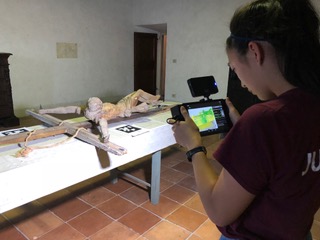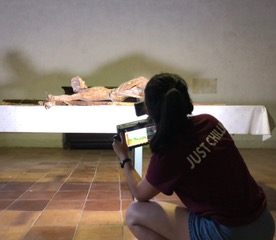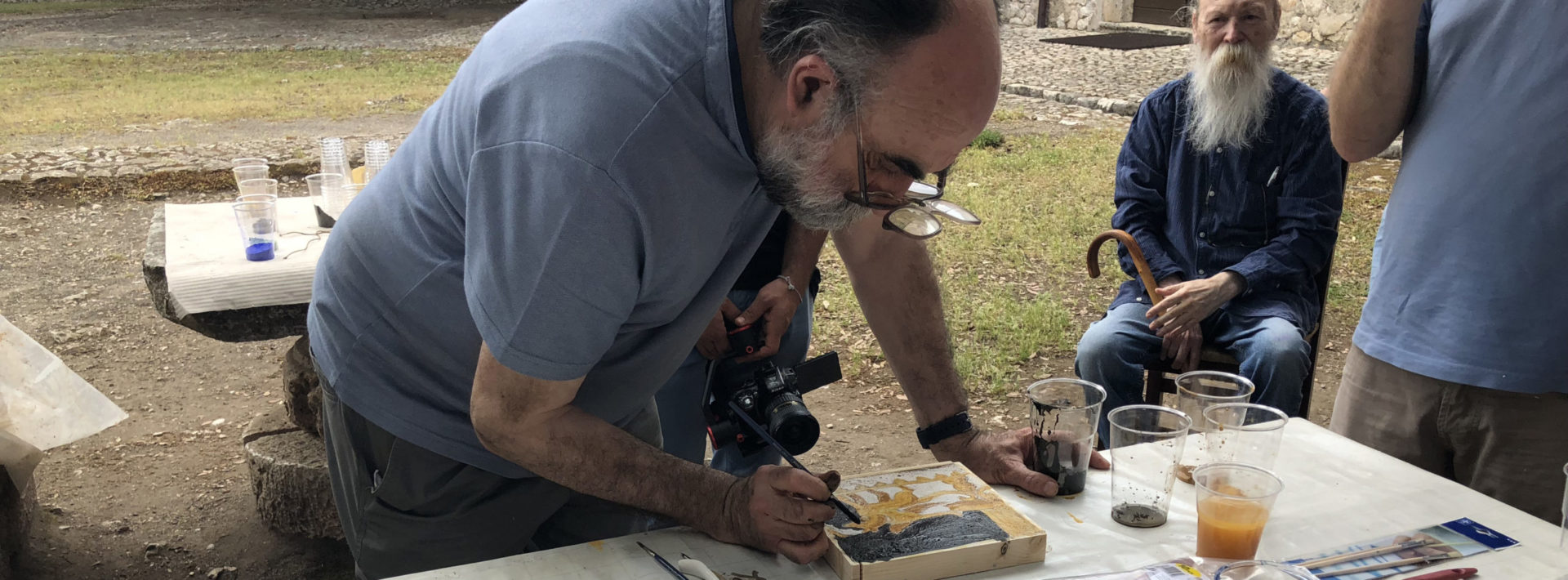ONE-MA3 2018: Learning to use the DPI

By Samantha D’Alonzo ’21
Over the past few weeks, we have been using many different techniques to digitally recreate artifacts and archeological sites. We were introduced to these techniques on our first day of work in Sermoneta by a guest lecturer, Diego. Diego was a local archaeologist who recently received a doctorate in civil engineering and archaeology.
Diego introduced the technique of photogrammetry to the One-MA^3 group. Photogrammetry is the science of extracting 3D images from overlapping 2D photos and is useful for measuring the dimensions of objects and rooms. We have been using photogrammetry at almost every archaeological site we have visited so far, from Pompeii to the aqueducts.
In his presentation, Diego also touched upon topics such as the structure of digital cameras and the mathematical concept of triangulation to point clouds and meshes, both key aspects of the ‘structure from motion’ software we began using today and will use throughout the rest of the trip. Diego finished his lecture with a live demonstration of the laser scanner he brought from his lab.
After Diego left, it was time to set to work applying all that he shared with us. We broke into three groups to explore three different types of 3D scanning: DPI, Drone Imaging, and Photogrammetry.
My group was responsible for creating a 3D reproduction of two religious statues found in our very own castle, one of the Madonna and another of Jesus Christ.

Margaret and the statue we recreated.
The two statues are thought to be from the 17th century, but little is currently known about who made them, what they are made of, and where they were originally made. Our 3D scanning weapon of choice was the DPI, a portable, handheld infrared device used for 3D scanning. Since it relies on infrared radiation and has a short range, the DPI is best suited for indoor use on medium sized objects, which made it perfect for these statues.


Clev using the DPI
The software was much harder to use than any of us had anticipated, and we ended up spending many hours trying to merge different scans and manipulate our 3D replications of the statues. Although it was difficult, and extremely frustrating at times, we ended up really understanding the technique. We have since been using the DPI at different sites across Italy, such as the Gardens of Ninfa, and will be using our models in the Fall during class.
This summer, Professor Admir Masic is leading a program on Materials in Art, Archaeology and Architecture (ONE-MA3), in which MIT undergraduates are conducting three weeks of fieldwork in Privernum, Pompeii and Turin as a prerequisite for the Fall 2018 MIT course, 1.057 Heritage Science and Technology. The program involves real-world analysis of ancient infrastructures and materials and focus on teaching ways to improve sustainability of the future through the study of ancient successes.



